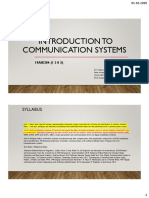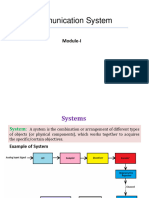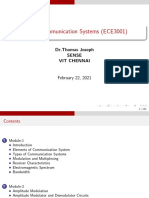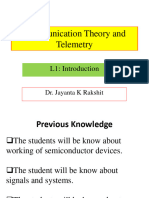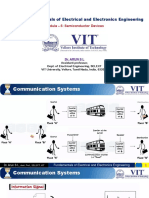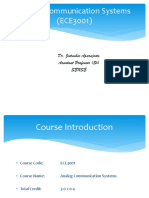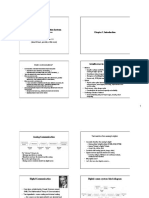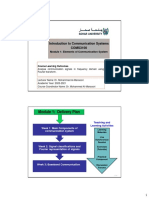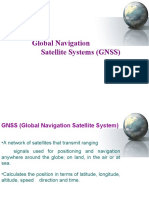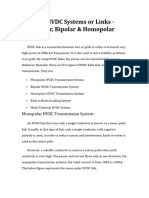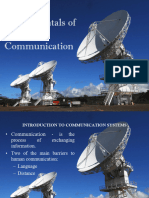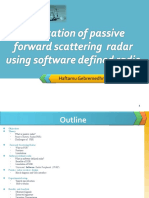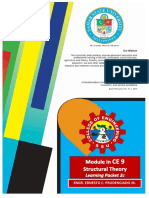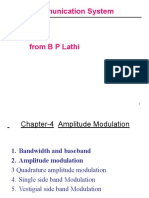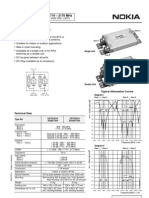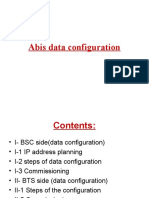0% found this document useful (0 votes)
34 views16 pagesLecture1-Content Intro
The EE304 Communication Systems course at IIT Mandi focuses on both analog and digital communication systems, emphasizing mathematical models and their analysis. Key topics include communication processes, modulation techniques, noise analysis, and modern communication technologies. The course includes a mix of theoretical and practical assessments, with a strong emphasis on problem-solving and supplementary reading materials.
Uploaded by
thomaskarthik4Copyright
© © All Rights Reserved
We take content rights seriously. If you suspect this is your content, claim it here.
Available Formats
Download as PDF, TXT or read online on Scribd
0% found this document useful (0 votes)
34 views16 pagesLecture1-Content Intro
The EE304 Communication Systems course at IIT Mandi focuses on both analog and digital communication systems, emphasizing mathematical models and their analysis. Key topics include communication processes, modulation techniques, noise analysis, and modern communication technologies. The course includes a mix of theoretical and practical assessments, with a strong emphasis on problem-solving and supplementary reading materials.
Uploaded by
thomaskarthik4Copyright
© © All Rights Reserved
We take content rights seriously. If you suspect this is your content, claim it here.
Available Formats
Download as PDF, TXT or read online on Scribd
/ 16











